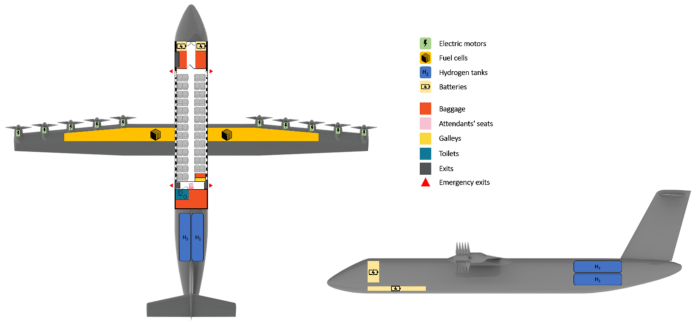This Content Is Only For Subscribers
Authors: Nils Thonemann, Eleonore Pierrat, Katarzyna Maria Dudka, Karen Saavedra-Rubio, Anna Lia S. Tromer Dragsdahl, Alexis Laurent
Publication Date: 28 September 2024
Category: SAF, Electric and Hybrid Propulsion Systems
Article Link: https://link.springer.com/article/10.1007/s42496-023-00173-6
DOI: https://doi.org/10.1016/j.spc.2024.01.013
Abstract (Official): The aviation sector needs to reduce its environmental impacts, like climate change and air pollution. New hybrid-electric aircraft concepts may contribute to abating part of these impacts. But to what extent and under which conditions? This study addresses these questions in the context of regional aviation and identifies technologies and concrete actions required for more environmentally sustainable aviation. The environmental impacts of emerging hybrid-electric aircraft configurations deployed in 2030, 2040, and 2050 have been comprehensively quantified using prospective life cycle assessment. The entire life cycle of the conventional and hybrid-electric aircraft configurations was encompassed, covering various technologies and systems like batteries, fuel cells, hydrogen, and selected alternative aviation fuel (AAF) systems. For these elements, detailed life cycle inventories stemming from primary data, literature, and prospective environmental databases were used, and uncertainty was evaluated. Results showed that hybrid-electric aircraft with Li-ion batteries appear as a promising transition technology in the short-term while aircraft propelled by fuel cells using hydrogen from electrolysis yield important environmental benefits relative to conventional aircraft in longer time horizons. In contrast, the studied AAFs present little or no environmental benefits when considering environmental impacts holistically, demonstrating the need to revise existing AAF frameworks and incentives globally. Environmental burden-shifting from flight emissions in conventional aircraft systems to airport operations and aircraft manufacturing in hybrid-electric aircraft is also observed in the results, thus calling for strengthened support to airports in their sustainability management and increased integration of ecodesign practices in future aircraft design and development.
GAT Editor’s Comments:
– This paper examines to what extent and under which conditions could hybrid-electric aircraft help to reduce the environmental impact of aviation
– The authors project the state of hybrid-electric aircraft development by 2030, 2040 and 2050 using a prospective life cycle assessment; this assessment covered the life cycle of conventional and hybrid-electric aircraft configurations and all their associated technologies and systems
– Results: hybrid-electric aircraft with Li-ion batteries appear to be the most promising transition technology in the short term, while over longer time horizons, aircraft propelled by hydrogen fuel cells (using hydrogen from electrolysis) will be more beneficial; the studied alternative aviation fuels provided little or no environmental benefits
– Learnings: this article points to the need to (1) revise or update alternative aviation fuel frameworks and incentives, (2) providing support to airports in their sustainability management, and (3) increasing the integration of ecodesign practices in aircraft design and development
– A major one recommendation is to invite policymakers and aviation stakeholders to prioritize efforts on securing the viability of hydrogen aircraft, and supporting the technological development of green hydrogen production.


